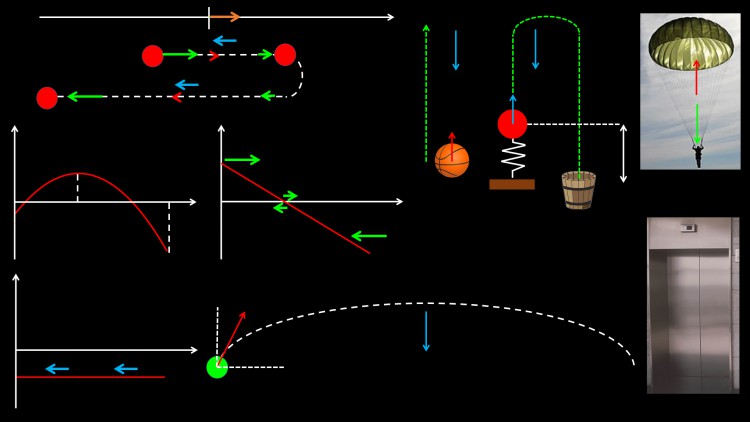
Quick and To-the-Point Course with Focused Lectures, Multiple Choice Quiz and Free Response Assignment
What you will learn
Understand instantaneous and average kinematic quantities (displacement, distance, velocity, acceleration).
Plot and interpret the relationships between particle motion graphs using geometry and calculus.
Derive the big five kinematic equations, and learn effective methods to select the correct equations to quickly solve various motion problems.
Derive the projectile motion equations from the big five kinematic equations and learn how to apply them efficiently in 2D motion problems.
Get a lot of practice with solving simple and challenging kinematic problems strategically, which involve uniform and non-uniform acceleration.
Description
This course is aligned with the AP Physics C (Mechanics) curriculum and covers Unit 1 (Kinematics).
The course is problem-based, and you will get plenty of practice in:
- Plotting and interpreting motion graphs of particles
- Applying the big five kinematic equations strategically to quickly solve uniform acceleration motion problems
- Applying calculus methods to solve motion problems involving non-uniform acceleration
- Solving 2D projectile motion problems
The course is ideal for:
- AP Physics C students
- First year university students who are taking Physics or Engineering
- Students who want to improve their problem solving skills in Physics
- Any person who wants to begin learning Physics.
At the end of this course, you will be an excellent problem solver in Kinematics and have a strong foundation to tackle the remaining AP Physics C (Mechanics) Units. I welcome your emails and requests, and will respond to you in a timely manner. I look forward to teaching you this course and will provide plenty of support so you get the most out of it.
The course is taught in the following modules:
1) Kinematics: Motion in One Dimension
a) Displacement, distance, average speed, average velocity
b) Instantaneous speed, instantaneous velocity
c) Instantaneous acceleration, average acceleration
d) Worked Example 1: Graphing the motion of a particle
e) Worked Example 2: Acceleration and position from the velocity graph
f) Big Five Kinematic Equations: Algebraic derivation
g) Big Five Kinematic Equations: Calculus derivation
h) Worked Example 3: How to select and apply the Big Five Kinematic Equations to a free fall problem
g) Worked Example 4: How to select and apply the Big Five Kinematic Equations to a more involved free fall problem
i) Worked Example 5: Applying the kinematic derivatives to a problem involving non-uniform acceleration
j) Worked Example 6: How to select and apply the Big Five Kinematic Equations to a more complicated elevator problem with several intervals of motion
2) Kinematics: Motion in Two Dimensions
a) Projectile Motion: Deriving the equations from the Big Five
b) Worked Example 7: How to select and apply the Projectile Motion equations
c) Worked Example 8: Determine the launch angle that maximises the range of a projectile
d) Worked Example 9: How to select and apply the Projectile Motion equations to more involved problems
3) Multiple Choice Quiz And Free Response Assignment
a) Multiple choice Quiz with a similar level of difficulty to the multiple choice section of an AP physics exam
b) Free response Assignment with a similar level of difficulty to the multiple choice section of an AP physics exam
Content